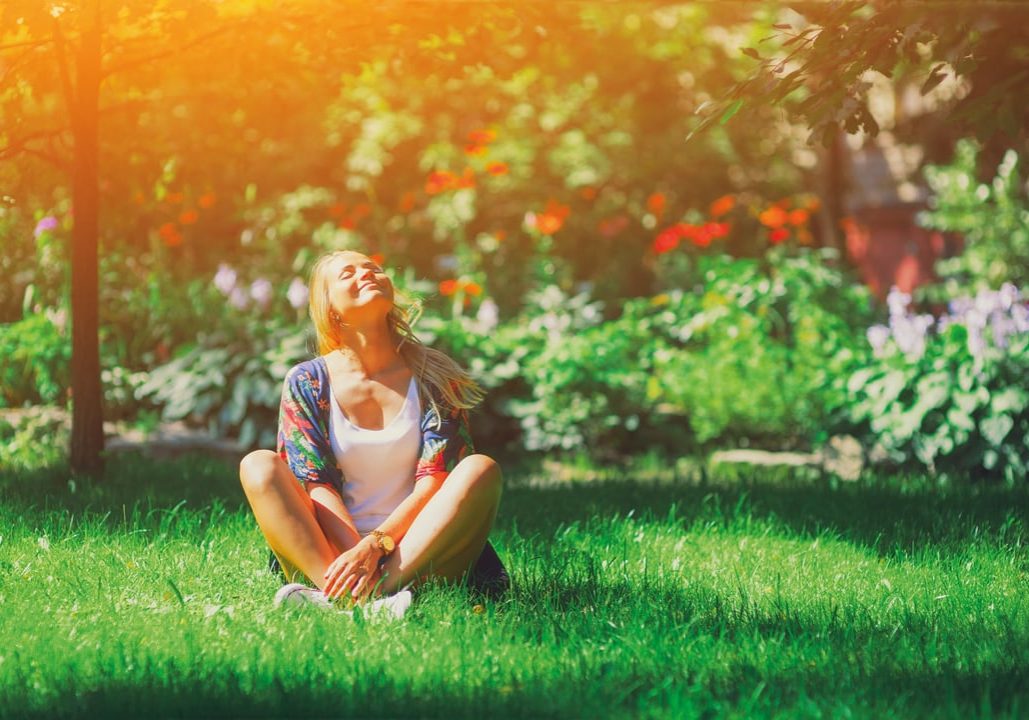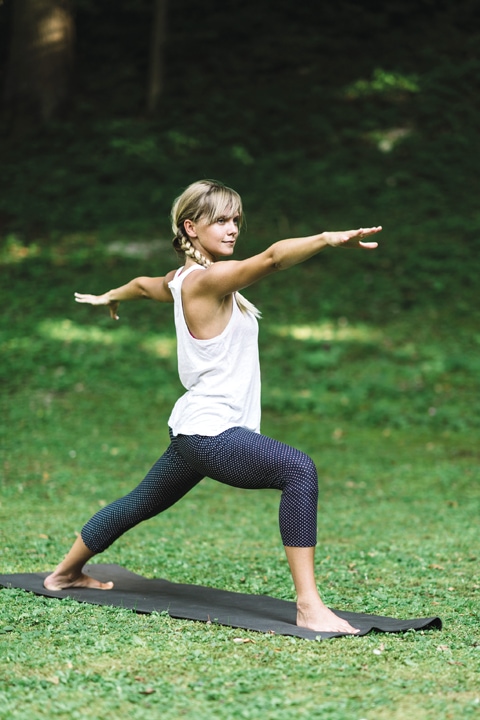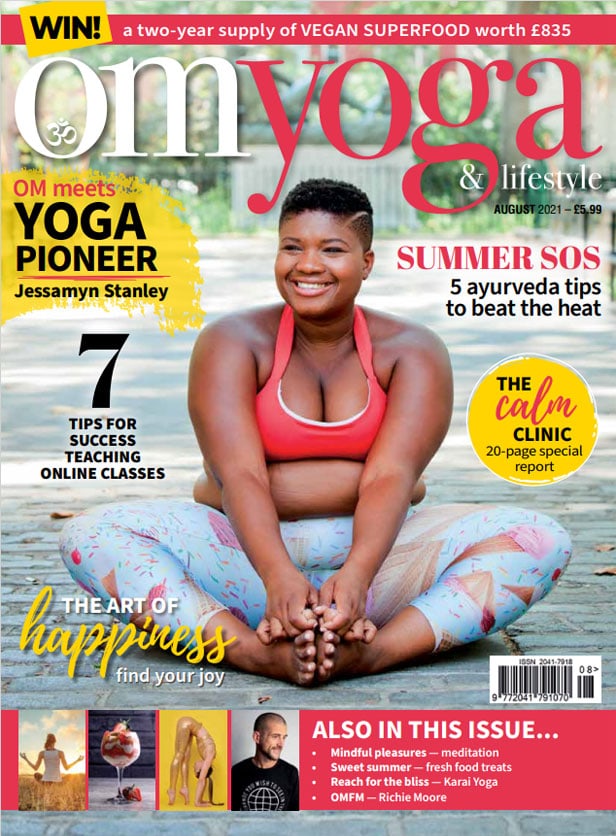
Being in balance
Balance is about more than just doing a stunning handstand on Instagram. Meg Jackson offers some insight into how to find it
What’s the first thing that springs to mind when you think about balance? Busting out an Instagram-worthy handstand? Holding tree pose for longer than an ancient oak? Gracefully settling into crow pose like a fully-fledged golden eagle (rather than flailing around like a bedraggled pigeon)?
Dig a little deeper into your practices, however, and you’ll find a whole heap of opportunities to practice being in balance. But – spoiler – most of this stuff ISN’T about what’s happening on the outside (although it’s all entirely applicable to our asana practice) but what’s going on inside.
In fact, you could translate one of the ultimate aims of living a yogic life as being in balance. Because when you’re in a state of balance it’s easy to feel connected and calm. You’re able to live from a point of appropriately responding to life’s events rather than instantly reacting. It’s distinctly possible to remain un-buffeted by whatever breezes, gusts, or hurricanes life sends your way. (Sadly, it doesn’t make for great content on social media, so if you’re all about those photogenic poses you may want to keep working out rather than working ‘in’...)
Even it all
out In every pose we want to feel a sense of evenness. Of course, you’re going to feel a chaturanga more in your arms than in your big toe, and trikonasana is going to give your hamstrings more to think about than tadasana ever will. But in no pose should any one bit of you feel like it’s doing all the work or taking all the strain.
In your backbend can you feel like you’re using the whole backline of your body as well as extending the front lines? In your warrior poses can you use both legs equally and not just collapse into the front hip? Could you feel like you’re lengthening every inch from the soles of your feet, through the calves, hamstrings, long back muscles and the back of neck with every forward fold?
Stillness is overrated
If you’re in a safe space and not operating any heavy machinery, get one of your feet naked. Now stand on one leg (the naked one) and watch what happens in your foot. In an effort to keep you upright, your foot will absolutely NOT be still. Muscles will be making microscopic adjustments as your body instinctively does what it needs to do.
So if your body naturally makes movement to help keep you balanced, what do you think will happen if you try to be perfectly still next time you’re trying to do your Best Ever Tree Pose? Well, it won’t end well. Balance requires movement. You need to be able to respond to the forces being exerted on you, and you’ll never be able to do that by resisting them.

Don’t care? Good
Something can only ever be right or wrong, or successful or a failure, if we have a rigid expectation of what it will look like, or feel like, when we achieve it. For example, if I decide that I “can’t” do tree pose unless I can stand in perfect balance with my heel lodged up against my pubic bone, bent leg fully externally rotated, with hands in prayer and an angelic look on my face, for five whole breaths, then any attempt which falls short of that is a fail.
But what about every moment that I spend working through ways to find the key ingredients to that pose? Every time I work on grounding my feet in standing poses, or learning how to engage my thigh muscles, or finding a softness and consistency in my gaze?
It is impossible to have a sense of balance in your practice if you’re too attached to only one possible outcome. Absorbing yourself entirely in achieving a predetermined, rigid goal means anything that isn’t that is automatically failure. And when you’re obsessed with two ends of a scale – one being success and the other being failure – you’re nowhere near a state of equanimity.
What goes up must come down
Or to put it more accurately for this context, what bends forward must also bend backward. I think it’s fairly safe to say that in almost all our modern-day vinyasa-style practices we generally do a lot more forward bending than we do backward bending. And, generally speaking, that’s not a problem...until it is a problem.
We need to make sure that for all the work we do lengthening and stretching, if we’re going to help ourselves stay physiologically balanced we probably need to do some work on strengthening too. Maybe that can be as part of your existing asana practice, for example learning how to engage and use muscles in poses to give optimum opportunity for building strength, or (heaven forbid!) adding a different way of moving and using your body to your health and fitness regime.
It all starts with your breath
Before we get carried away (as is our nature) with all the big sensations, fancy poses, and extortionately effortful asana, let’s not forget that balance has to start somewhere way more subtle: the breath.
Our breath is there to help us get feedback from our bodies; tuning in to it we can tell if we’re pushing too hard or trying to muscle our way into flexibility. (And if you are trying to do that – don’t.)
It’s also there to help us negotiate with our bodies; we all know the power of using a well-placed exhale to feel that momentary release of some tension or built-up resistance.
But perhaps most importantly the breath is there as an anchor for us to truly settle into this moment and the experience of being present. But you can’t do that if the breath is erratic. If you’re panting like an asthmatic warthog (no offence intended to asthmatics or warthogs), or forcing a breath so deep that it’s making you see stars, guess what? That’s not conducive to being in balance either.
Can you take a moment – here and now – to just watch your breath? Just allow it to be. Don’t try to change it or control it in any way. Watch the rise of the inhale and the fall of the exhale and for once just accept it as it is.
Victor Frankl said: “Between stimulus and response there is a space. In that space is our power to choose our response. In our response lies our growth and freedom.”
I think that we can only find that space if we’re in a state of balance, and yoga can give us that and so much more. (And yes, in the effort you may also get a good pic for Instagram!)
Meg Jackson is the founder of Real Life Yoga – a movement to help real people bring a little (or a lot) of yoga into their real lives. Learn with her online, and in person at various locations in the real world! Visit: reallifeyoga.net




